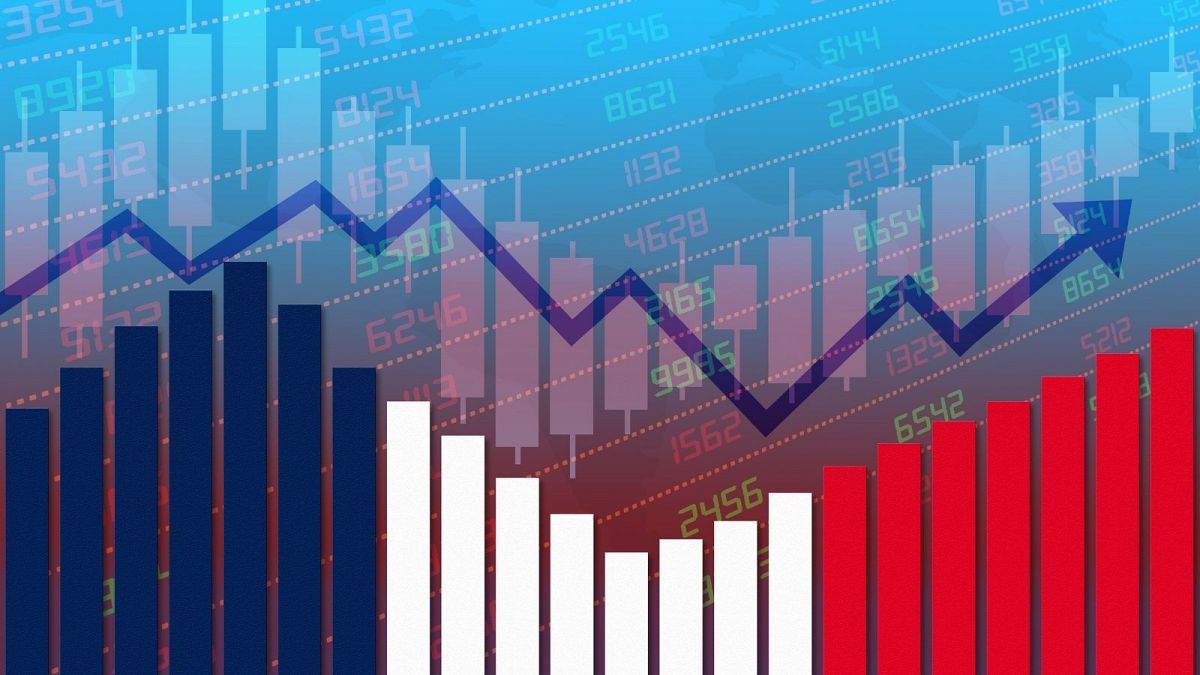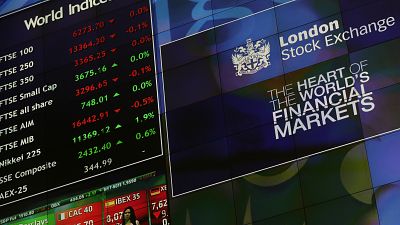France’s debt went from €1 trillion in 2003 to €3 trillion this year. What happened?
France’s economy minister Bruno Le Maire says he wants to slash the country’s multi-trillion euro debt, starting by launching the 2024 budget plan he introduced in September.
French debt reached the €3 trillion mark at the beginning of 2023, equivalent to 112% of its GDP. It reached its first trillion 20 years ago, in 2003.
France is not alone in this regard. Together with Greece, Italy, Portugal, Spain and Belgium, it’s one of the EU and euro area countries whose debt is higher than 100% of their respective GDP.
Does this mean their seemingly eye-watering debts are out of control?
Where does national debt come from?
Public debt is the accumulation of public deficits over the years.
It means that a state is spending more than it earns, and ends up owing more and more money as time passes.
French authorities, like governments across the world, have spent huge sums of public money to counterbalance the negative effects of several crises.
The most recent example of this is the energy and cost of living crises sparked by Russia’s invasion of Ukraine, which prompted swathes of public spending to cushion the damage to households and the economy, but also the COVID-19 pandemic and the 2008 financial crisis.
Who is the money owed to?
When a couple takes on a mortgage to purchase a house, they owe the sum they borrowed, plus interest, to their bank.
It’s slightly more complicated when it’s public money, owed by public bodies.
Over half of French debt is owned by foreign entities, including 15% owned by the European Central Bank (ECB).
This one is fairly straightforward to grasp, as central banks and foreign investment funds routinely lend money to governments.
Then, about a quarter is owned by French entities through stocks, bonds or shares, with the remainder owned by various insurance and loan agencies.
Paying the money back
France’s debt is not sustainable, as reimbursing such large sums of money is virtually impossible. It’s equivalent to each French citizen reimbursing €45,000 – a significant amount, although it pales in comparison to US debt broken down per citizen.
It will take time, as debt securities can be issued for up to 50 years. Although finance minister Le Maire says he wants to work towards debt reduction in 2024, it would take drastic public spending cuts.
No one-size-fits-all solution exists when it comes to public debt.
A significant part of it is reimbursed through people’s savings and life insurance – like in Japan, the developed nation with the highest debt (above 250% of its GDP).
The past three years of back-to-back crises have been exceptionally rough for people and governments.
As inflation shows encouraging signs it is past its peak, with unemployment rates low and interest rates potentially soon being lowered by central banks, states might get some relief and be able to curb public spending.
Trillions in debt but trustworthy
Increasing its debt does not mean that France isn’t actively paying back its existing dues.
France is still considered trustworthy by financial rating agencies: In spite of several social crises and episodes of violence, its relative political stability and credibility thanks to honouring past reimbursements mean the country is attractive to investors – including those who can lend money.
Other European countries with high debt such as Italy and Greece do not benefit from such confidence.
Many countries, such as the United States, have a high debt relative to their GDP. However, strong economies are still attractive, and MPs continue to vote on budgets with spending that exceeds earnings.



